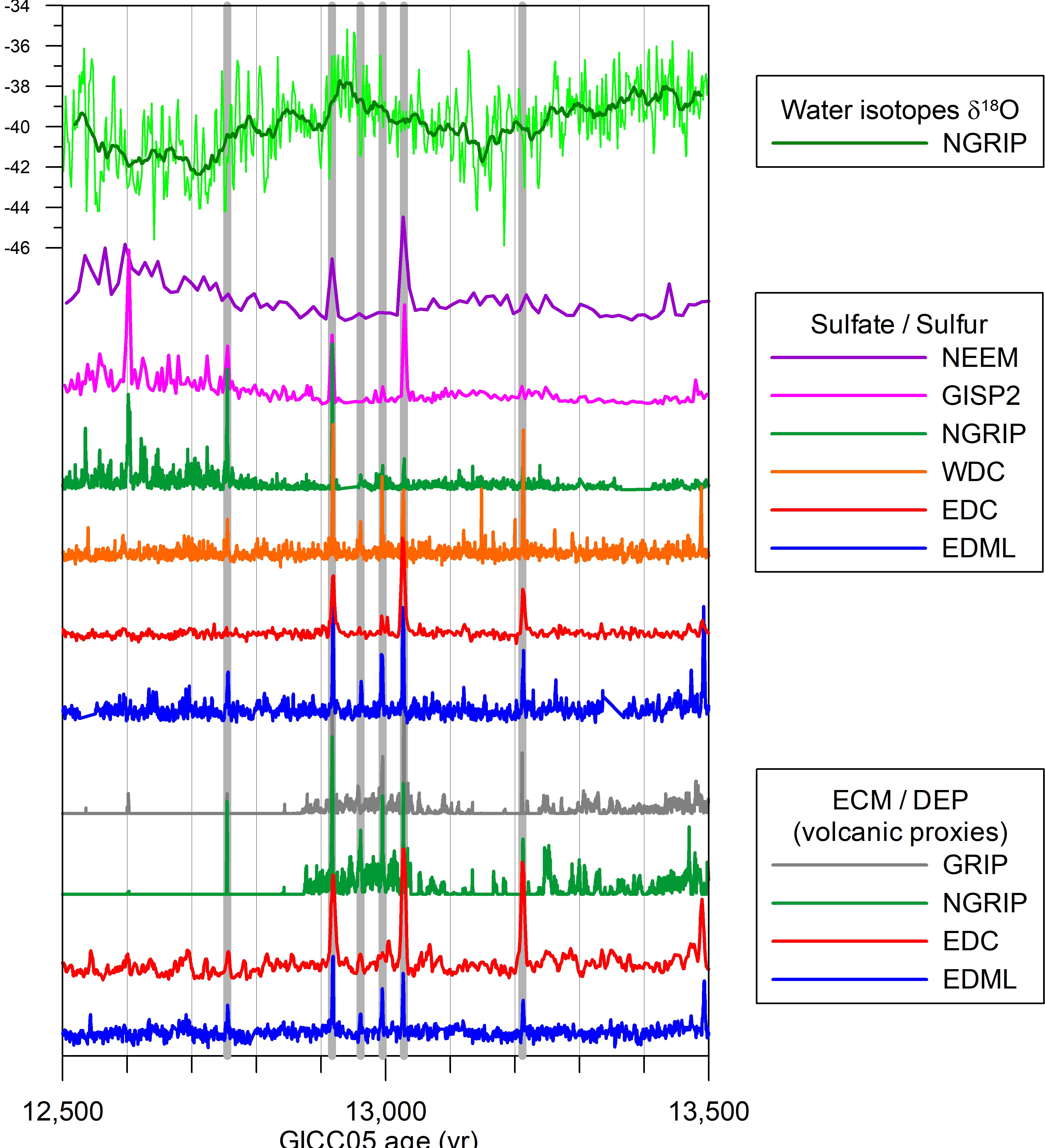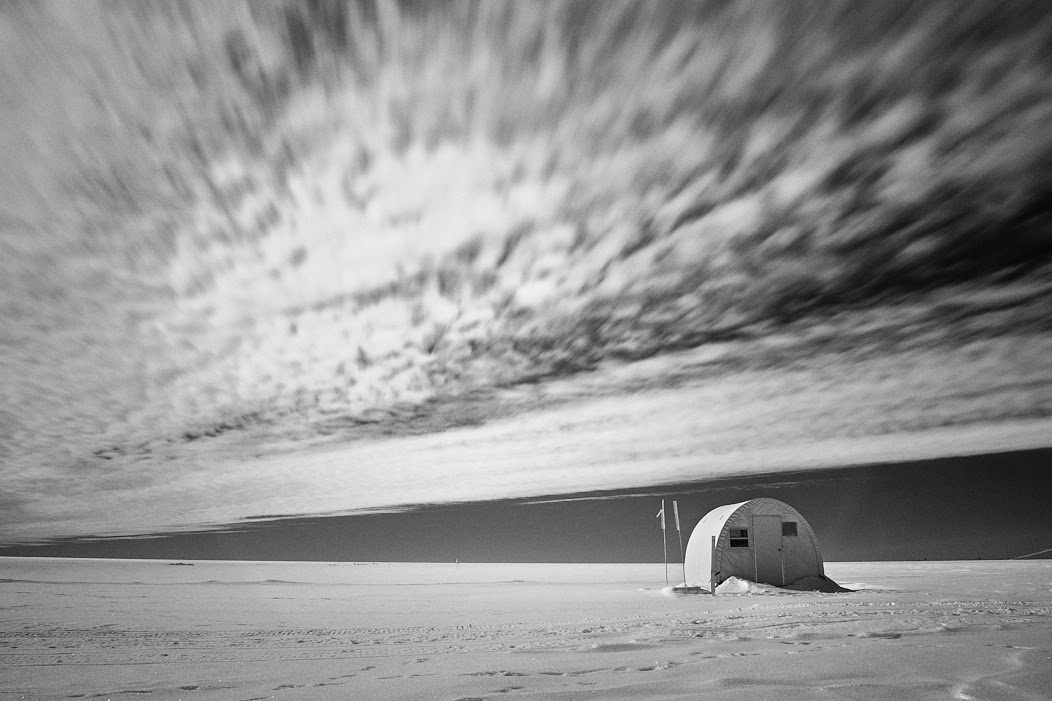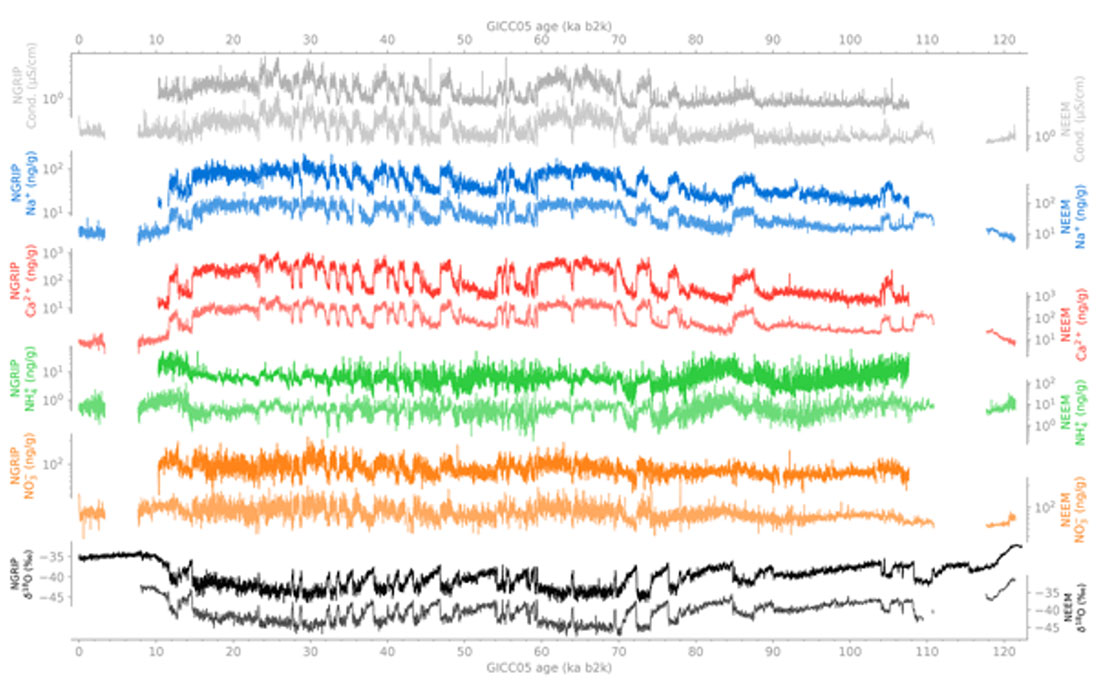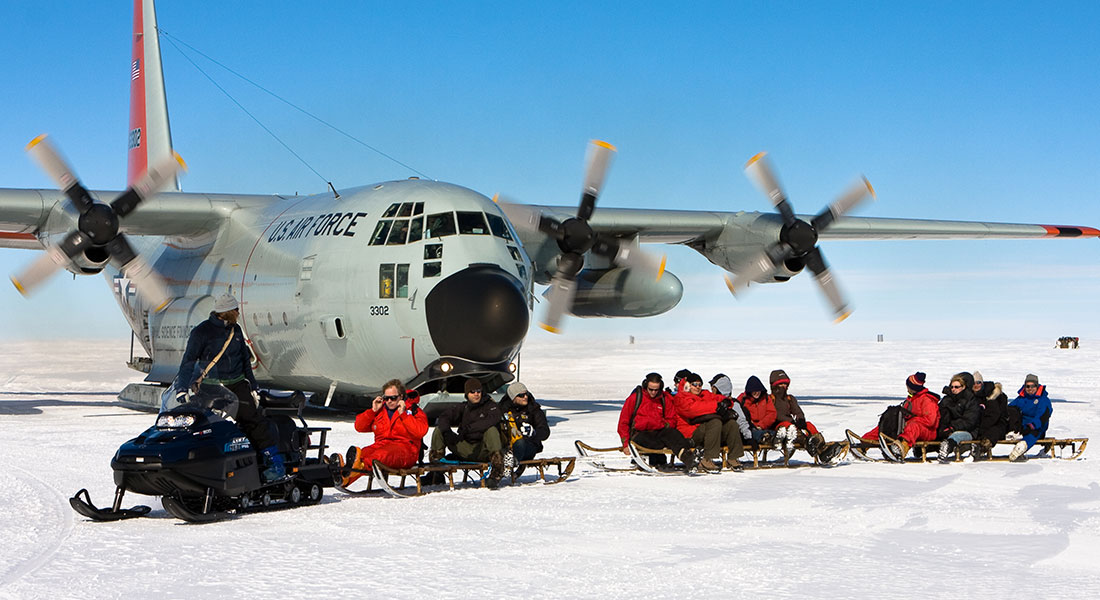Chemistry & impurities group
MSc and BSc projects in Continuous Flow Analysis (CFA) of chemistry and impurities.
Contact: Helle Kjær, Anders Svensson and Vasileios Gkinis
These particular master and bachelor projects involve chemical measurements of ice cores, for example informing on wind patterns, aridity, volcanic eruptions and sea ice variability.
Global volcanism of the last glacial period (60, 30, 15 ECTS)

Volcanism has significant impact on climate and volcanic records are used to force climate models together with orbital forcing, greenhouse gasses etc. Using existing acidity records from Greenland and Antarctic ice cores we are currently mapping out the magnitude and frequency of large volcanic eruptions occurring during the last glacial period (11-115 ka BP).
Student projects related to this topic could involve quantification of the deposition of sulfate and chloride on the ice sheets, the frequency and duration of past eruptions based on ice core records, estimates of the climatic impact of the eruptions, or attempts to correlate the major eruptions seen in the ice to well-known pre-historical eruptions.
It is also possible to work on tephra particles from the ice cores that are applied to identify the source of eruptions. The projects typically involve some programing for manipulation of large datasets.
Contact: Anders Svensson
Recording the sound of ancient bubbles in ice cores
Msc Thesis Project: The sonic signature of ancient air bubbles in ice cores
Keywords: ice cores; paleoclimate; Greenland; polar research; Continuous Flow Analysis; sound measurements; total air content; Python; spectral analysis; bubbles
The air bubbles occluded in polar ice cores contain extremely valuable paleoclimatic information in the form of ancient air, whose composition can be determined in the lab yielding time series of gas concentrations in atmosphere spanning millennia. Another characteristic of the ancient air bubbles is their popping sound emission when ice core samples are being controllably melted for high-resolution Continuous Flow Analysis measurements.
 We would like to investigate the audio signal of the “popping” bubbles. Our goal is to perform high quality sound recordings followed by spectral analysis of the bubble popping frequencies in order to infer how many and how large the bubbles are. Therefore, we offer a Master thesis project for a motivated student who will further develop the recording and melting system as well as work on the data analysis of the sounds recordings.
We would like to investigate the audio signal of the “popping” bubbles. Our goal is to perform high quality sound recordings followed by spectral analysis of the bubble popping frequencies in order to infer how many and how large the bubbles are. Therefore, we offer a Master thesis project for a motivated student who will further develop the recording and melting system as well as work on the data analysis of the sounds recordings.
You can expect to gain skills in sound and bubble physics, sound recordings as well as high resolution ice core measurements. You will also work with noise filtering and spectral analysis techniques. Prior experience in data
analysis with Python/Matlab is a plus. PICE is an active, multinational/multicultural group with plenty of learning opportunities.
We will be happy to hear from you!
Should you have any questions on the project feel free to contact: Vasileios Gkinis
New ice core records
These BSc and MSc projects involves measurement campaigns in the laboratory and subsequent interpretation of the climate record.
The chemical content in the ice is analysed by continuous flow analysis systems (CFA-Bigler et al. 2011) or discrete eg, by means of Ion Chromatography (IC). The impurities come from different sources and thus yield different information about the climate system (wind, aridity, sea ice, volcanoes and more) and ice from Greenland can reach back to the last interglacial period.
In specific deep sections of the NewGRIP and NGRIP ice cores representing past warm and glacial sections within international projects are planned for 2026, as well as a number of shallow cores covering the last few decades are planned for analysis in 2026-2027.

The NEEM and NGRIP CFA profiles covering the Last glacial period. Figure from Erhardt, Tobias, et al. "High-resolution aerosol concentration data from the Greenland NorthGRIP and NEEM deep ice cores." Earth System Science Data 14.3 (2022): 1215-1231.
Further because the concentration levels of impurities are in the order of magnitude of parts per billion of the melted ice (ppb, 1:10^9). Detection methods have to be very sensitive. Thus conventional (flourescence and absorption) methods need improvements to meet the low concentrations in the ice cores. Such 1 yr MSc projects works on optimizing novel methods for CFA and involves system development, testing, measurement campaign and interpretation of the climate record.
Student background can be physics, chemistry, climate change and more.
Contact: Helle Astrid Kjær
Albedo feedbacks on the Greenland margin
Over the last two decades, the Greenland Ice Sheet (GrIS) has developed a seasonal “Dark Zone” during summer. This darkening is largely driven by glacier ice algae blooms, which lower albedo and accelerate melt. What fuels these blooms? This project explores whether nitrogen (N) and phosphorus (P) released from melting ice control or fuel algal growth.
To investigate this, we collected material from two nearby Dark Zone sitesnear Kangerlussuaq Greenland, sampled at two different time points. You will analyze inorganic and organic nutrients using spectrophotometry (at AU Risø), measure dust counts, and perform δ18O analysis on these samples (at NBI). Your results will help reveal how ablation feeds surface biology, trace the origin of this ice, and assess how nutrient availability might change over time.
Students could be -chemistry, physics, geophysics
Contact: Helle Astrid Kjær
Sea ice of the past (60 ECTS)
The Arctic is rapidly changing and sea ice has declined through the satellite period. This thesis seeks to constrain if this is abnormal compared to earlier climate states. One way to tackle this is to focus on compiling datasets of past climate extent into spatial maps. Such a project could involve utilizing AI methods on opens source datasets, and is challenged by the availability and dating uncertainties of paleoclimatic records.
Another way to tackle the question if present sea ice is abnormal is to obtain more proxy data. A new proxy based on diatom species found in ice cores (Tezner et al. 2022) from land glaciers can be evaluated in different age ice cores. Further the connections between past sea ice variability and climate observed in the same ice cores and other climate archives will be studied. Such a project would involve system development, testing, laboratory work and interpretation of the climate record.
Student backgrounds i.e geology, geography, geophysics, datascience, physics, geophysics.

Tetzner, Dieter R., Claire S. Allen, and Elizabeth R. Thomas. "Regional variability of diatoms in ice cores from the Antarctic Peninsula and Ellsworth Land, Antarctica." The Cryosphere 16.3 (2022): 779-798.
Contact: Helle Astrid Kjær

